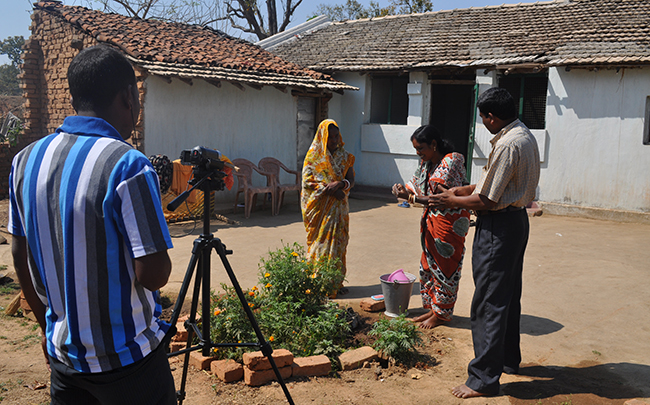Community Video for Nutrition Guide
The SPRING/DG collaborative approach represents a unique combination of technology and social and behavior change communication in support of improved nutrition. The main components are videos featuring local community members, each video demonstrating a particular high-impact nutrition practice and its benefits. Production and screening of the videos ignites a chain reaction through the community, sparking the adoption and promotion of improved practices and making this knowledge actionable. The key to success is producing relevant, good-quality videos that generate and maintain community interest. This section describes procedures for producing these videos and applying quality standards and feedback mechanisms to both identify content and enhance its quality.

Figure 2 below details the steps in the production process with bolded emphasis on the elements specific to the MIYCN approach detailed in this guide. The other steps are only briefly summarized below and are further detailed explained in the DG SOP.
Figure 2: Production
Click on the "Read section ..." buttons below and the corresponding steps in the process will appear.
- Use formative research and consult with the community to inform topic selection.
- Document and analyze community interest in new topics from feedback on previous disseminations.
- Identify adoption points and create a package of practices for each behavior to track adoptions and promotions.
- Develop a storyboard for each topic
- Identify early adopters as actors in the community to feature in each video
- Shoot the video following the storyboard
- Edit video clips and add breaks with text annotations
- Pretest the video with an audience to ensure comprehension
- Ensure technical review for accuracy of content and audio/video quality
- Add subtitles to the video for global review / dissemination